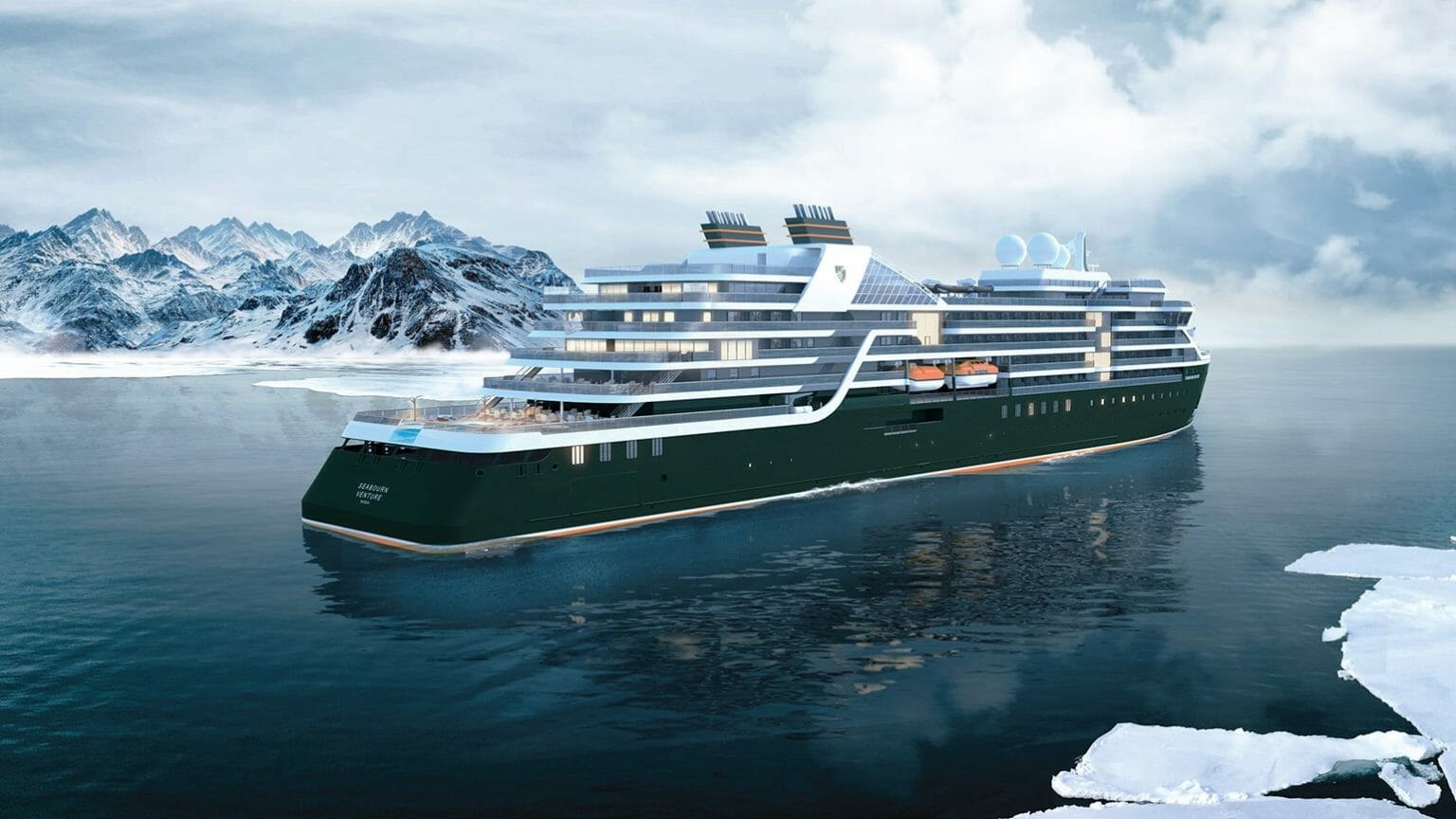A reports suggests travelers avoiding hotter destinations in favor of cooler ones this summer, but is it all just hot air?
If you are considering booking travel LiveAndLetsFly.com appreciates your support.
If you haven’t followed us on Facebook or Instagram, add us today.
The Coolest Destinations
Travel trends and consumer data from the last 6-12 months suggest there is a growing shift to cooler weather destinations (that’s cooler temperatures, not necessarily trendier ones) though it may not just be to beat the heat.
“In July [2024], Norwegian Air added 10 new routes between northern Norway and European cities, Reuters reports, while international arrivals to Norway, Ireland and Sweden were all up by more than 10%.
Flight-ticketing data firm ForwardKeys reported that domestic air arrivals to Alaska had increased 10% year-on-year, driven by a 30% increase in arrivals from Dallas, Texas, as residents looked to escape the heat.” – World Economic Forum
I’ll address that specific data point later.
Last September, a writer from Vogue recounted her experience hiking in Gstaad, eschewing her typical summers on the Mediterranean.
“While weather has always been a factor for travel—winter storms during the holidays, hurricanes in the summer—the heat wave across Europe last summer followed by the wildfires in Greece and Maui had a profound effect,” says Misty Belles, vice president of global public relations at travel agency network Virtuoso.
While Italy and Greece are perennial favorites, more travelers are shifting the timing of their Southern European vacations—or abandoning them altogether. This year, Virtuoso saw a significant increase of 44% in travel to cooler destinations like Canada, Finland, and Iceland in June, July, and August, while warmer destinations only saw a slight 0.5% decrease, says Belles.” – Vogue
That data supports a massive shift to colder destinations during peak summer travel periods but warmer destinations still maintained their position (even if down half a percent.) Travelers weren’t abandoning warmer haunts like Rome, Athens and Barcelona, but rather the entirety of the traveling public grew substantially with almost all of that growth heading north.

At my agency, we have had a front row seat to the travel boom in Antarctica, growing from a niche corner of the market to more than a dozen competitors with a very full season in 2025/26. Iceland and Greenland have also been growing in the expedition space, though not at the same clip – there are still deals and incentives even for the upcoming season set to start in the next 6-12 weeks.
This migration north predates the current air traffic cliff the US is seeing following a number of policies instituted by the Trump administration.
Blowing Smoke
Where there’s smoke, there’s fire. The question is what is driving travelers north? The easy answer is hotter temperatures and climate change.
“The trend for ‘coolcations’ reflects a conscious decision by a growing portion of consumers to avoid the most intense summer heat and wildfires that are occurring in certain parts of the world on an annual basis,” Southan told CNBC.
“Rather than shun hotspots in the Med completely, for example, they are travelling in spring and autumn, whereas in July and August, they opt for places such as Norway and Finland that are more temperate,” she added.” – CNBC
NewsNation points to cruise with a rise last year in colder climates, though it doesn’t demonstrate the overall growth in travel last year, or availability and capacity where the Arctic has seen an explosion of growth:
- Arctic – 235%
- Canada – 137.4%
- British Isles – 33.3%
- Antarctic – 32.4%
- Fjords & Norway – 23.2%
- Alaska – 22%
But the data doesn’t demonstrate the fall-off that will occur as the Fjords & Norway have closed to most large cruise ships which aided its growth. This year, we will almost certainly see a decline in the Arctic given that growth at those levels are unsustainable.
Other Contributing Factors
The missing factor in these data points are a lack of context. One such concern was horrendous overcrowding in Europe’s most popular summer destinations. Articles in Vogue, CNBC, and NewsNation all point to crowds as a contributor.
“If you go back to post-pandemic, 2022 and even into the summer of 2023, we saw southern Europe just be rife with popularity,” Intrepid Travel CEO James Thornton told CNBC over video call.
“It felt like everyone just had to go back to the Mediterranean, to Italy, to Greece, to Spain, because they hadn’t had the opportunity for a couple of years to be able to do that. What happened was, it was crowded, it was often expensive, and you were seeing various natural challenges happen — often as a result of climate change,” Thornton said. – CNBC
With overcrowding an additional issue, that also leads to higher costs too, allowing alternative destinations to thrive. That doesn’t point to extreme heat and record breaking summer temperatures alone, it also points to record travelers all traveling at the same time of year.
But the cruise piece can’t be overstated. Antarctica and the Arctic had fewer than half the operators in the space. Seabourn alone increased from zero ships in 2021 to a pair of modern ships by the fall of 2023. Those ships spend November to March in Antarctica and May to October in the Arctic, Iceland, and Greenland. Scenic went from one ocean vessel in 2018 to two in 2023 with a focus on those markets. Swan Hellenic debuted two polar-class vessels in 2023.

These seem like small fleet increases but given the costs, position, nature of the environments in which they operate, and size of the market, these are huge market additions. Cruise restrictions due to COVID left the market mostly empty in 2020-2022 then recovering in 2023 and exploding in 2024. With the exception of Canada, the other destinations on the “coolcation” list align with significantly increased cruise traffic.
Conclusion
Are travelers suddenly avoiding European hotspots in the summer months because of global warming? Maybe. Are traveler choosing cooler destinations to avoid overcrowding and high prices or because increased capacity, these are also possible legitimate outcomes. Part of the truth has to be that there’s simply more travelers in the market in 2024 and maybe in 2025 too – they need a place to go. Where and why they choose to travel is probably anecdotal and personal. But as bad as the term “coolcations” is, the trend exists and the upcoming 2025 summer season data should make it clear if they are here to stay.
What do you think?




I have lived in Iceland. Quite frakly June, July and August is the only time you would want to visit. So as don’t see this as anything earth shaking.
I live in Florida. We’ve long tried to go to cooler places in the summer in order to escape the heat and awful humidity for a time. This summer will include Iceland and Alaska for me.
We have taken summer trips to Alaska, Finland, Norway (above the Arctic Circle), Scotland and Southern Africa to escape the MidAtlantic heat.
I have long tried to avoid the heat of summer and what crowds want to do for summer vacation. Hot in DC/NYC and having free time? Then I would perhaps be the person you saw lugging skis on the DC Metro or NYC Subway while it was sweltering above ground — all to get to Argentina and Chile for skiing during Northern Hemisphere summer and cooler weather outdoors in the cities. It has since been escapes to Scandinavia during the summers, but it has gotten hotter in the summers in much of Scandinavia too and so then I have to increasingly factor in air condition plans to avoid the heat in summer.
So you can guess where you won’t see me: where masses of tourists go in the summer and are sweating like crazy while visiting tourist sites.
“Coolcations” are awesome. I’ve done Iceland, Denmark and Scotland on a summer. And in a few months I’ll hit up Scandinavia again. It already gets up to ~45c / ~105F where I live in the Summer, going to the beach for more sun is just flat out unappealing at that point.